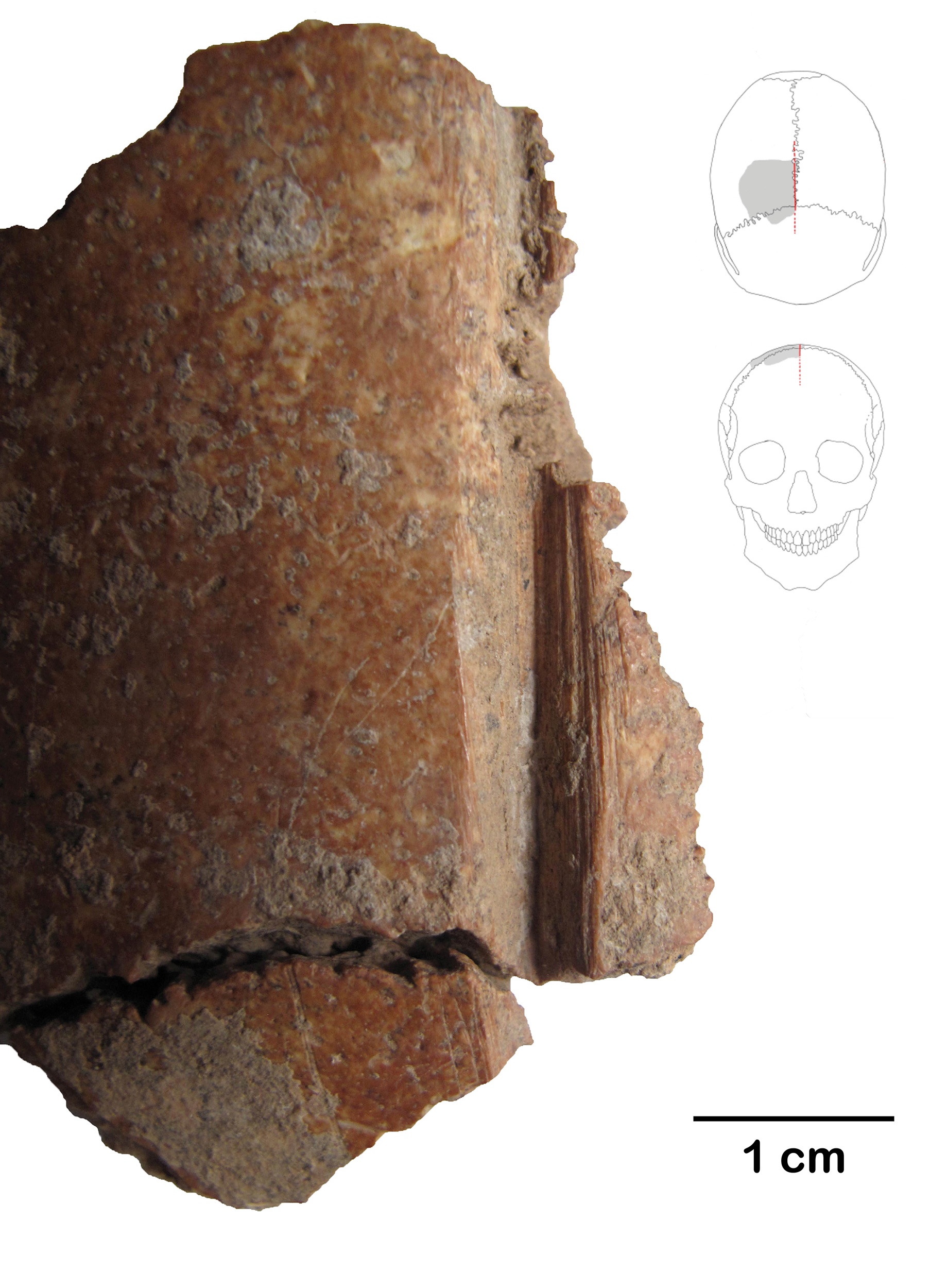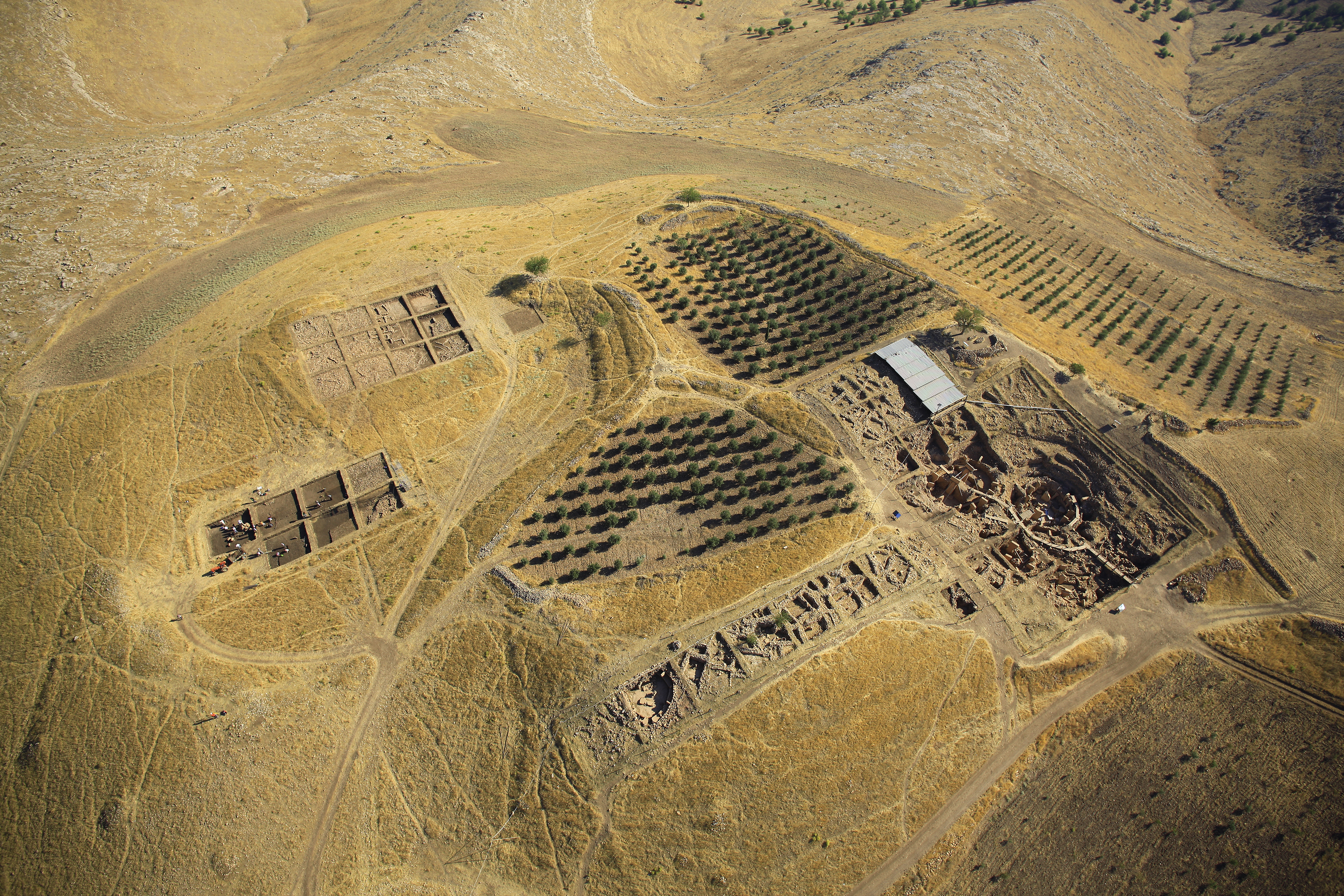Carved Human Skulls Reveal Cultic Rituals at Mysterious Site in Turkey

Fragments of three carved human skulls have been uncovered at a mysterious ritual site in Turkey.
No one knows what rituals were performed at the site, which was constructed 11,000 years ago during the Stone Age in an impressive display of handiwork: The site contains several stone rings, which are decorated with elaborately carved animals and punctuated with pillars up to 13 feet (4 meters) tall. There are no signs that anyone lived at the site, which is called Göbekli Tepe, nor are there signs of formal graves. But archaeologists have uncovered 691 human bone fragments mixed into the soil there.
"It's a fantastic place," said Julia Gresky, a paleopathologist and bioarchaeologist at the German Archaeological Institute in Berlin.
Now, Göbekli Tepe has become a little bit more fantastic with the discovery of skull fragments carved with long, deliberate lines from the forehead to the back of the head. These discoveries reveal the existence of a "skull cult" in ancient eastern Anatolia, Gresky told Live Science. The ritual markings on these skulls are unlike those seen in any other civilization, though.
"I tried to compare to other known skeletal investigations from other sites, but there was nothing," Gresky said. [Gallery: See Photos of the Carved Skulls of Göbekli Tepe]
Skull cults
Skull cults appear across history and even in some modern tribal societies. In these cultures, skulls are typically exhumed shortly after burial and de-fleshed. They might then be painted or sculpted over with plaster. At Cayönü Tepesi, another Neolithic, or Stone Age, site in Turkey, archaeologists uncovered a building that contained some 70 disembodied skulls. Another Stone Age site called Tell Qaramel in present-day Syria contained human skeletons with missing heads and cut marks suggesting the skulls had been removed shortly after death.
Göbekli Tepe was built at a time when Stone Age peoples in the region were making the transition from hunting and herding to a more sedentary, agricultural lifestyle. Gresky and her colleagues found the Göbekli Tepe skull fragments in a loose mixture of backfill material filling up the circular stone structures at the site. The backfill consists of soil, pieces of flint, human bone fragments and animal bone fragments, Gresky said, and no one really knows how it got inside the site's structures. It may have been excavated by people abandoning the site, who used the material to fill in the defunct structures, she said. Or it could have simply washed down into the buildings from higher ground over the years.
Get the world’s most fascinating discoveries delivered straight to your inbox.
Between 2009 and 2014, Gresky found seven skull fragments with strange carving marks on them. The seven fragments belong to three skulls. All seem to have come from adults, but the remains aren't complete enough to say much about the ages or sex of the individuals.
Skull décor?
Markings on the skulls indicated they'd been cleaned of flesh and then cut soon after death, Gresky and her colleagues reported today (June 28) in the journal Science Advances. The carvings were deep grooves that ran from the forehead back along the top of the skull; some fragments preserved lateral carvings, too, located above where the ear would have been. One skull had a drill mark about 0.2 inches (5 millimeters) in diameter near the center of the top of the head. This same skull also showed traces of red ochre, a natural pigment frequently found on Neolithic skulls used in rituals.
The carvings and the lack of other decorations, like plaster, make the Göbekli Tepe skulls unlike any others found before, Gresky said. Though the people who built Göbekli Tepe were clearly talented carvers who could create works of stone art, the skull carvings are crude, Gresky said. Their ugliness could indicate that they were a way of stigmatizing the dead individual for some reason, she said.
Alternatively, the carvings could have been a way to decorate or display the skulls. The grooves might have provided purchase for cords, which might have been used to attach feathers or other bangles, Gresky said. Or the cords could have been used to hang the skulls and keep their dangling jaws from falling down. The drilled mark in one of the fragments was positioned in a way that if a cord were threaded through it, the skull could hang vertically, Gresky said.
As to why Neolithic people were so fixated on skulls, that remains an even larger mystery. In recorded history, skull cults usually form for one of two reasons, Gresky said. Some groups display the skulls of their dead enemies. Others disinter and decorate skulls as a form of ancestor worship.
"At the moment, we can't say what is the most probable" at Göbekli Tepe, Gresky said. "That will take some time and hopefully more skeletons."
Original article on Live Science.

Stephanie Pappas is a contributing writer for Live Science, covering topics ranging from geoscience to archaeology to the human brain and behavior. She was previously a senior writer for Live Science but is now a freelancer based in Denver, Colorado, and regularly contributes to Scientific American and The Monitor, the monthly magazine of the American Psychological Association. Stephanie received a bachelor's degree in psychology from the University of South Carolina and a graduate certificate in science communication from the University of California, Santa Cruz.



